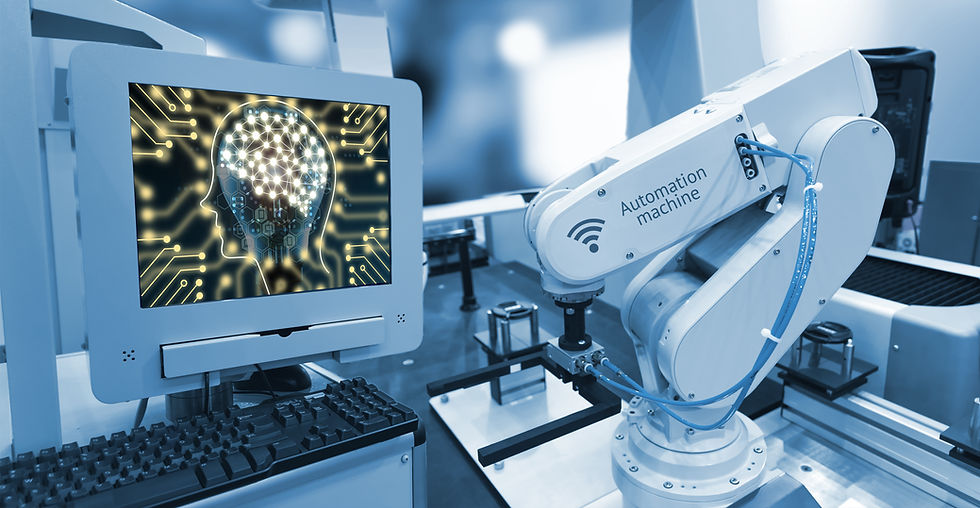Putting the STEM in Stem Cells: Using Stem Cells and Xenobots to Educate Future Scientists
- Amanda Grodman

- Oct 12, 2022
- 3 min read
Updated: Jun 2, 2023
Currently, discussions relating to diseases, whether they be contagious, hereditary, or chronic, are widespread and will continue to circulate as the global population increases. With these discussions come questions of a “cure”–however, maybe it isn’t so much about curing a disease than mitigating its effects and protecting hosts in chronic situations. Though treatments of chronic diseases may be associated with newly-developed technology or medicine, managing ailments may be more cellular than we think. In recent years, stem cell treatments have been used to address chronic maladies and concerns, primarily in those that are in later stages of a disease or have experienced molecular damage. Debates questioning the moral justification of using embryonic stem cells, one type of reparative cell, for disease-hindering research is prevalent in the scientific realm today–but one thing is for certain: stem cells of all kinds are revolutionary in terms of their potential and previous case studies. With this, what are the benefits and risks of stem cells in a realistic situation, and how can these microscopic components fuel current/future generations of students into pursuing science? The answer may lie in an Artificial Intelligence (AI) frog cell.

Stem cells are fundamentally unspecialized microorganisms that can act as different organ cells and therefore promote repair in damaged bodily regions (click the link to see answered FAQs about stem cells). For example, those with damaged nerves or tissue can undergo treatments that aid cell growth, where an organ without these cells may fail and endanger the host. These cells are either derived from adult or embryonic tissue, but are well-versatile in their specialization abilities (are able change into a specific cell, i.e. liver cell, to repair) and can even populate genetically-unharmed cells in a lab (indicating a sustainable method of unassisted reproduction). Ultimately, stem cells are commonly discussed when the topic of illness arises because of its multifaceted uses–being able to treat those with diabetes, Parkinson’s disease, Alzheimer’s disease, and more. With this, however, stem cells differ between treatments and may be ineffective/harmful because of the cost and pain associated with transplants. While researchers and the general population shouldn’t shy away from the possibility of stem cells being ineffective or even harmful to those treated, current studies indicate that we may be almost on the same wavelength with stem cells–a historical scientific advancement.

While reparative stem cells are derived from humans and used primarily for medicinal research, similar eukaryotic cells can be used to provide hands-on learning opportunities in a classroom setting. Xenobots, or robotic organisms derived from frog embryos, mimic both robotic and physical life with their interdisciplinary properties (learn more about their potential via the link). These hybrid robots (with a name derived from Xenopus laevis, or the African frog) may sound familiar because of their multi-facets also possessed by stem cells, in that xenobots constructed from loose stem cells cluster together and can move as an independent organism (thus their robotic characteristic comes in). Within a classroom, educators can emphasize the diversity of these small organisms, along with their possible disease-treating benefits, to show students the power of cellular biology and its collaboration with robotics. Moreover, countless videos of these xenobots in action are available, allowing students to compare their robotic and living characteristics, while also seeing the influence of AI from a healthcare perspective. Ultimately, students interested in entering technology or epidemiology, or who are simply interested in hands-on life sciences, can greatly benefit from xenobots and may find a future in stem cell research–where they could challenge diseases one frog cell at a time.

In this episode of “Let’s Go to Space: BLUESKY Learning,” Episode 79: Student Project Spotlight: From Paragliders to Xenobots and Digital Engineering in Space, we’re joined with Argyrios Deanie Vaitsos and Dylan Kiesling, two middle school students who continue to exemplify the importance of real-world experiences regardless of age. Dylan shares with us his comprehensive work with xenobots, along with the importance of educating younger students about digital applications, while Deanie expresses his projects orbiting paragliders and HABs. Dylan and Deanie have been long-standing members of the Wolfpack, and will continue to complete enlightening projects in their future endeavors. Both students are great examples of what realistic opportunities can do–and also show the promising feats of the next generation. Learn more about Argyrios Deanie Vaitsos and Dylan Kiesling, or visit our other weekly podcasts to hear from other speakers, by clicking the link above. Also make sure to check out our website to learn more about becoming a member of the Aerospace and Innovation Academy, where you can join us in our quest to go to space.




コメント